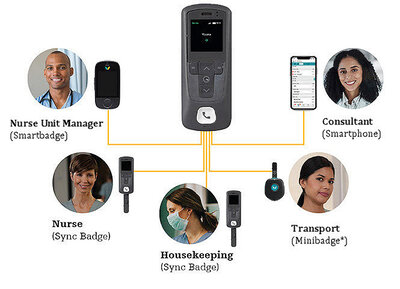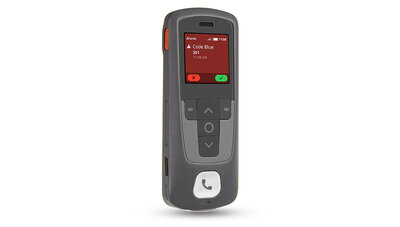Voice-activated tool aims to help improve health outcomes in acute care settings

Hospitals throughout Australia and New Zealand are welcoming the launch of a hands-free communication tool, which responds instantly to voice commands and enables rapid-fire exchanges between care teams.
Developed by Stryker, the tool — known as Sync Badge — is expected to improve health outcomes by helping acute care workers relay urgent information, summon assistance, and assemble response teams within seconds.
Staff can awaken the technology by saying “Okay, Vocera”, then — by calling out a name, role, group or extension — make or transfer calls, within or outside the hospital.
“The Sync Badge bridges gaps to ensure care team members remain hands-on where they’re needed most — with their patients,” said Scott Sagehorn, vice president and general manager of Stryker’s Acute Care business.

A clear need
The data is clear that speed and ease of communication is critical in hospitals.
Researchers have highlighted communication issues’ involvement in medical errors, misdiagnoses and, in turn, life-threatening complications.
In acute care settings, the stakes are even higher, with details of the patients’ condition, history and preferences often required immediately.
Prioritising what matters
As well as improving communication, the Sync Badge can make clinical workflows easier and more efficient, further boosting patient outcomes.
The tool has intuitive buttons to help staff quickly navigate and prioritise communications, and incoming messages are neatly organised into a three-section inbox which makes urgent notifications stand out and older items easy to retrieve.
When staff need to focus on patient care, they can set the Sync Badge to Do Not Disturb mode, which can be set for 5- 10-, 15- or 30-minute stints.
A knock-on effect of this is better job satisfaction, with clinicians able to work more seamlessly and with fewer interruptions.
In a climate where it’s increasingly challenging to attract and retain workers, we expect this will be a welcome feature, albeit one that is secondary to helping patients.

Better handling of safety incidents
In the event of a security breach, workers can also utilise the Sync Badge’s panic button, which opens a discreet communication channel with in-house or external security teams.
Responders can see the user’s name and location, hear what’s happening and communicate directly with them, even if they can’t speak.
In hospitals, safety and security incidents are common. Last year, the Australian Medical Association highlighted that over 20,000 violent incidents occurred in Victoria’s public health services in 2023.
The issue is heightened in emergency departments, given the high-stress environment.

Learn more
The Sync Badge tool has already been deployed successfully in a number of healthcare settings worldwide, helping more than 100 customers worldwide.
Book in a demonstration and a no-strings conversation here.
InterSystems Launches HealthShare AI Assistant to Optimise Data Retrieval and Clinical Engagement with Conversational Intelligence
InterSystems has announced the launch of InterSystems HealthShare AI Assistant, a new generative...
Tackle HealthTech AI data challenges early on
Data preparation challenges for AI applications are often underestimated and addressed too late....
The Benefits of AI in Clinical Trials for Patients
Artificial intelligence (AI) is reshaping the design, planning, and execution of clinical trials.




![[New Zealand] Transform from Security Awareness to a Security Culture: A Vital Shift for SMB Healthcare — Webinar](https://d1v1e13ebw3o15.cloudfront.net/data/89856/wfmedia_thumb/..jpg)
![[Australia] Transform from Security Awareness to a Security Culture: A Vital Shift for SMB Healthcare — Webinar](https://d1v1e13ebw3o15.cloudfront.net/data/89855/wfmedia_thumb/..jpg)




